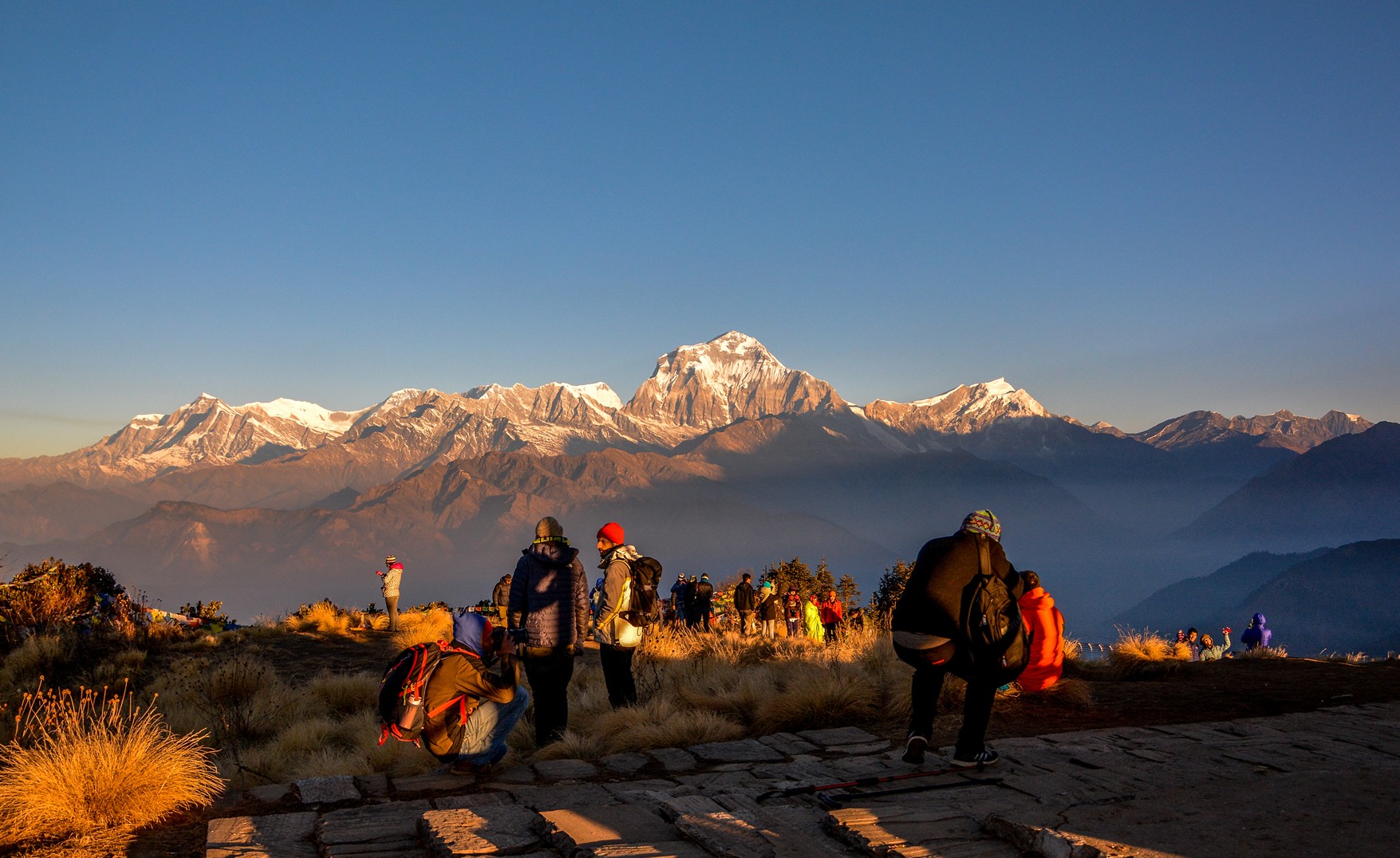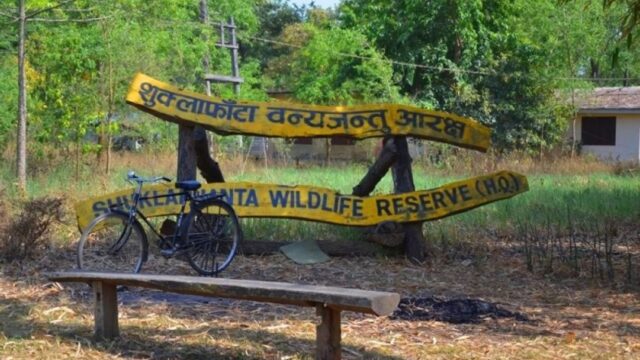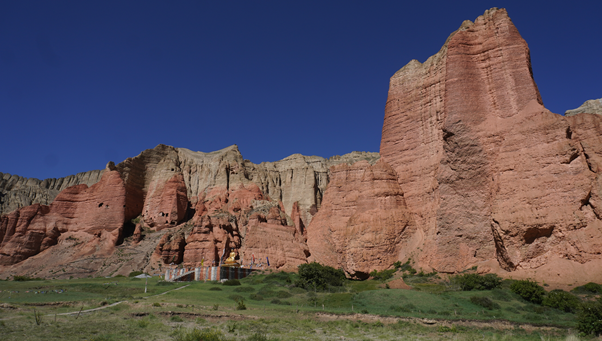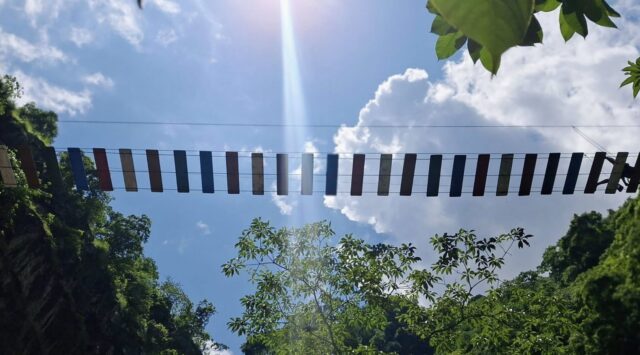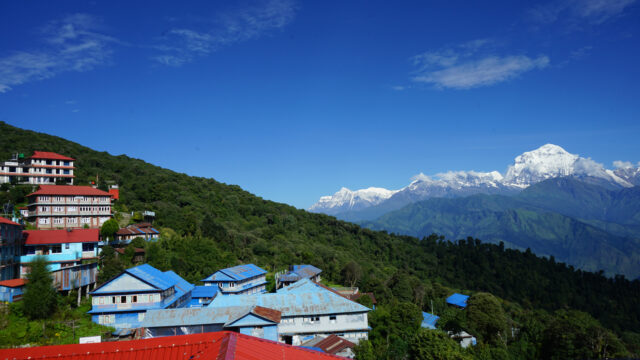This morning, Poon Hill in Annapurna Rural Municipality-6, Myagdi, offered a breathtaking view, resembling a meticulously crafted canvas by an artist. The scene featured a long range of white Himalayas as a backdrop, lush green forests surrounding a hilltop, and the sound of birds and wildlife echoing through the peaceful environment. The ground was adorned with blooming alpine flowers, adding to the scenic beauty.
Situated at an altitude of 3,210 meters above sea level, Poon Hill has begun to reveal its enchanting and picturesque views as the weather improves. Okkar Shrestha from Beni shared his experience, saying that the greenery of Poon Hill captivated him. “We traveled on motorcycles along the Beni-Pokharebagar-Ghar-Shik-Phalate-Chitre route, connecting to Ghorepani, and then hiked to Poon Hill,” he said. “The view from Poon Hill wiped away all the fatigue from the rough roads and uphill trek.”
The sight of mountains such as Churen, Putha, Gurja, Dhaulagiri, Manapathi, Nilgiri, Annapurna, Baraha Shikhar, Machhapuchhre, Lamjung, and Manaslu, along with the sunrise, added excitement and joy to the trip, according to Dipendra Neupane from Dhaulagiri Rural Municipality-7. Mukunda Sharma, a businessman from Beni, mentioned that the tranquil environment and cool breeze of Poon Hill made it an ideal spot for yoga and meditation, helping to manage stress. “The serene atmosphere helped me forget my worries,” he said. “Poon Hill is a perfect destination for a short family getaway.”
Poon Hill, which is usually dry, becomes lush and green during the monsoon season. Former chairman of Annapurna Rural Municipality and hotel entrepreneur at Ghorepani, Dambahadur Pun, noted that the best time to visit Poon Hill for those who appreciate quiet and solitude is during the months of Bhadra, Ashoj, and Kartik. “You can witness different views with each season,” he said. “Poon Hill is special because you can observe multiple mountains, forests, hills, and both sunrise and sunset from a single spot.”
Poon Hill and Ghorepani, part of the circular Annapurna trekking route, are attractive and exciting destinations for those seeking an accessible yet captivating destination near the tourist capital of Pokhara. Travelers can reach Ghorepani from Pokhara via Nayapul in Kaski by vehicle, followed by a day’s trek.
From Ghorepani, it takes only half an hour of uphill hiking to reach Poon Hill. Alternatively, visitors can drive from Beni in Myagdi to the center of Annapurna Rural Municipality, Pokharebagar, and reach Ghorepani in about two and a half hours. Those on the Poon Hill-Ghorepani trek can also visit Dhampus or Ghandruk on the way.
Visitors staying overnight in Ghorepani often hike to Poon Hill at dawn to witness the sunrise and the stunning view of the Himalayas as the sun’s rays first touch the peaks. The beauty of the mountains at sunrise is mesmerizing.
Meena Pun, chairperson of the Ghorepani Hotel Management Sub-Committee, mentioned that there are 25 well-equipped hotels in Ghorepani, capable of accommodating up to 1,000 guests daily. “From the rooms of these hotels, you can see the Himalayas,” she said. “The Magar Museum, as well as the culture and lifestyle of the area, add to Ghorepani’s appeal.” According to the Ghorepani Tourist Police Post, the Ghorepani-Poon Hill area, visited annually by around 30,000 foreign tourists, attracts an even larger number of Nepali tourists.
To visit Poon Hill, Nepalese citizens pay an entry fee of NPR 50 per person, while foreigners pay NPR 150. Last year, the rural municipality awarded a contract worth NPR 6.6 million for collecting entry fees and operating tea shops at Poon Hill.
This year, despite two calls for bids with a minimum price of NPR 5.5 million, no proposals were received, and the municipality is preparing to issue a third notice, said Deputy Chairperson Diwakumari Tilija Pun. The revenue generated from Poon Hill is allocated for development projects that address local needs and demands, as well as for the promotion of tourism in the rural municipality.
